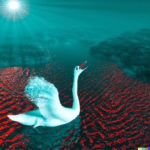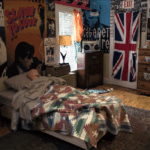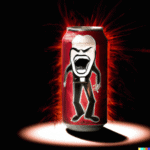When David Coverdale formed Whitesnake in 1976 after leaving Deep Purple, he likely had no idea that he would someday become a staple on music video channels and have a connection to cars and Tawny Kitaen. In the beginning, David Coverdale simply wanted to combine his soulful vocals with great guitar riffs to create a bluesy rock sound that would dominate hard rock stations and festivals in Europe. Until Slide It In was released in 1984, Coverdale’s Whitesnake would be nearly unknown in the U.S. That changed after the release of Slide It In. Although he was the lead guy, Coverdale understood the value of great axe slingers. The list below shows that his vision went well beyond cars and women in videos and more towards great masters of radio ready riffs.
Mickey Moody
Although not as well-known as some of the other Whitesnake guitarists, Micky Moody has the distinction of being with David Coverdale from the beginning as an original member of Coverdale’s solo project that preceded Whitesnake. The solo albums, White Snake (1977) and Northwinds (1978) included co-writing efforts from Moody along with contributions from Deep Purple bassist Roger Glover.
Along with Bernie Marsden on guitar, Neil Murray on bass and Deep Purple alum Jon Lord on keyboards, Moody would play on the first Whitesnake album Trouble. Moody would continue his work with Whitesnake through 1984’s breakthrough album Slide it In. Moody would leave after this record and return to session work, solo projects and various guest appearances.
Bernie Marsden
Prior to being a founding member of David Coverdale’s Whitesnake along with Coverdale and Micky Moody, Bernie Marsden was guitarist for Paice Ashton Lord – which included Ian Paice and Jon Lord of Deep Purple. The band only recorded one album before breaking up. Bernie Marsden also had a brief stint with hard rock greats UFO before giving way to Michael Schenker.
Following Paice Ashton Marsden instead hooked up with Coverdale for his new post-Deep Purple band. With Whitesnake, Bernie Marsden was one half of the guitar attack for the first ep and 5 albums beginning in 1978 with Trouble and going through 1982’s Saints & Sinners. During this time, Marsden co-wrote many of the Whitesnake songs and is best known for co-writing the international hit “Here I Go Again.”
Although Bernie Marsden never reached the commercial success of his Whitesnake output, he has remained very active in solo projects, numerous bands and guest appearances.
Mel Galley (Trapeze)
Along with the legendary Glenn Hughes (Deep Purple) on bass and vocals and drummer Dave Holland (Judas Priest), Mel Galley was a founding member of the criminally underrated British rock band Trapeze. From 1970 through 1979, Trapeze recorded 6 studio albums. The band remained together through various lineup changes until Galley left to join Whitesnake in 1982. Galley joined Micky Moody as the guitar duo for Slide it In – the most successful Whitesnake album to that point.
While a member of Whitesnake, Mel Galley suffered an arm injury that resulted in nerve damage that kept him from being able to play guitar. He was able to use a device known as The Claw that allowed him to play guitar again. Although no longer a member of Whitesnake, Galley was able to resume his career and record albums with his brother for the band Phenomena which included many famous guest contributors including John Wetton (King Crimson and Asia), Brian May (Queen) and former bandmate Glenn Hughes.
Vivian Campbell (Dio, Def Leppard)
When Ronnie James Dio decided to leave Black Sabbath to embark on a solo career, he knew he needed a monster guitar player. Having worked beside Richie Blackmore in Rainbow and Tony Iommi in Black Sabbath, Dio knew how important a great guitarist is to a heavy metal band. Originally, Dio selected Ratt’s guitarist – Jake E. Lee – for his new band. Shortly after joining Dio, Jake E. Lee was offered the job of replacing Randy Rhodes in Ozzy’s band leaving an empty spot in the lineup. Dio turned to a virtually unknown 20-year-old guitarist from Northern Ireland named Vivian Campbell. Although young, Vivian Campbell already had recorded output with British metal band Sweet Savage. Once Dio released their first album Holy Diver in 1983, Vivian Campbell became a well-known name in heavy metal circles. Following up the successful debut, Vivian continued with Dio for Last in Line and Sacred Heart. After 2 Platinum Albums and 1 Gold album, Campbell left Dio and joined Whitesnake in 1987 shortly after the band recorded the self-titled Whitesnake (also known as 1987) – but in time to re-record a guitar solo for “Give Me all Your Love.” Campbell then joined fellow guitar hero Adrian Vandenberg, bassist Rudy Sarzo and drummer Tommy Aldridge as the touring band to support the Whitesnake tour. Shortly after the tour, Campbell left Whitesnake in 1988.
Following stints with Lou Gramm, Riverdogs and Shadow Kings, Campbell joined Def Leppard in 1992 to replace Steve Clark for the Adrenalize album. Vivian Campbell is still a member of Def Leppard and has recorded several albums with the hard rock giants including 2022’s Diamond Star Halos album.
Adrian Vandenberg (Vandenberg)
Vandenberg stormed on to the heavy metal scene in 1982 with their debut album Vandenberg with the help of a Top 40 hit in “Burning Heart.” The Dutch band was headed up by a virtual unknown guitarist named Adrian Vandenberg. Along with the single “Burning Heart,” Adrian Vandenberg wrote the music and lyrics and co-produced the debut album which peaked at number 65 on the US album charts. The follow up album Heading for a Storm was released the following year in 1983 hoping to build on the momentum of the successful debut. The album unfortunately never came close to the previous success and stalled out at 169 on the Billboard 200. The third album, Alibi, released in 1985, did little to improve on things and would become the last Vandenberg record until a 2020 reunion.
David Coverdale first approached Adrian Vandenberg about joining Whitesnake in the early 80’s but the guitarist declined due to his own band. In 1986, with Vandenberg stalled commercially after three albums, Adrian agreed to join Whitesnake. Coverdale had recently fired the entire band and was looking to go in a new direction around the time of the release of Whitesnake. While the album was recorded by other members, including John Sykes, Vandenberg did record the guitar solo for the massive hit “Here I Go Again.” For the follow up album Slip of the Tongue, Vandenberg co-wrote all track on the album but was unable to record the album due to an injury. Steve Vai stepped in to record the guitar parts and then joined up with Vandenberg for the supporting tour. Vandenberg would be on board for 1997’s return album Restless Heart where he again co-wrote all of the songs.
in between his work with Whitesnake, Vandenberg formed Manic Eden with fellow Whitesnake bandmates Rudy Sarzo and bass and Tommy Aldridge on drums. They released their only album Manic Eden in 1994. The group disbanded when Vandenberg signed up for the 1994 Whitesnake reunion tour.
Following his time in Whitesnake, Vandenberg formed a new band – Vandenberg’s MoonKings. The band released Vandenberg’s MoonKings in 2014 and MK II in 2027, along with an acoustic album titled Rugged and Unplugged in 2018.
Doug Aldrich (Dio, Dead Daisies)
Doug Aldrich recorded his first album – Dangerous Attraction – in 1987 with Glam rock band Lion. After a few more albums with Lion, he formed the Bad Moon Rising in 1991 where they would record several albums in the 90’s. Although not a success in the U.S. market, Bad Moon Rising were very popular in Japan. After the breakup of Bad Moon Rising, Aldrich formed Burning Rain and recorded 2 albums before disbanding in 2002. While Aldrich recorded several albums with various bands in the 15 years between 1987 and 2002, he was still somewhat obscure outside of heavy metal circle. That all changed in 2002 when he joined as lead guitarist for Dio for Killing the Dragon. Aldrich also appears on a few Dio live albums but he left before the recording of the next Dio album in 2004.
When David Coverdale announced the formation of a new tour for 2003, Aldrich was named guitarist where he would remain until 2014. During this time, Aldrich made a big mark on Whitesnake – performing on 2008’s return album Good to Be Bad – playing guitar and co-writing all songs on the album. In 2011, Aldrich would be back to record Forevermore, where he would again co-write all of the songs with David Coverdale.
2014 would mark the official end of Aldrich’s tenure as guitarist for Whitesnake but it was the beginning of a very active recording career over the past 8 years. In addition to recording new albums for former band Burning Rain, Aldrich joined forces with hard rock supergroup The Dead Daisies in 2016 recording Make Some Noise. Aldrich is still lead guitarist for The Dead Daisies and has recorded two additional albums – Burn it Down (2018) and Holy Ground (2021).
Other Guitarists
John Sykes (Thin Lizzy, Blue Murder, Tygers of Pan Tang)
By the time John Sykes joined Whitesnake in 1984, he had built an impressive resume as a guitar player for British Metal band Tygers of Pan Tang and heavy rockers Thin Lizzy. As co-lead guitarist for Tygers of Pan Tang, along with Robb Weir, Sykes played on Spellbound and Crazy Nights – both released in 1981. These two albums helped solidify Tygers as one of the preeminent bands in the New Wave of British Heavy Metal (NWOBHM) movement of the early 80’s along with Iron Maiden, Saxon and Def Leppard. Although Sykes left the band in early 1982 shortly after the release of Crazy Nights, he is credited with guitar on two songs from The Cage released in 1982 including the minor hit of their cover of “Love Potion No. 9.”
Sykes did not waste much time landing in another band when he joined arena rock stars Thin Lizzy where he recorded their final studio album 1983’s Thunder and Lightning. On the subsequent farewell tour, Sykes is lead guitarist for their live album titled Life.
While on tour with Thin Lizzy, Sykes met the members of Whitesnake and was asked to join the band. Sykes debuted live for the band in early 1984. While Slide it In was already released in the UK with Moody and Galley on guitar, Sykes recorded some new guitar parts for the US release. Slide it In would become the band’s biggest hit to date in the US. By the time the band entered the studio for the follow up, titled Whitesnake, Sykes was deeply entrenched in the songwriting ultimately co-writing seven of the nine tracks including two of the biggest songs on the album “Still of the Night” and “Is This Love.” With the help of MTV, Whitesnake became a massive success in the US selling more than 8 million copies. With the album ready for release in early 1987, David Coverdale made the decision to fire the entire band – including John Sykes.
Following his stint in Whitesnake, Sykes joined forces with Tony Franklin – best known as bassist for The Firm with Jimmy Page and Paul Rodgers – and drum legend Carmine Appice formerly of Vanilla Fudge and Cactus. The trio, known as Blue Murder, released their self-titled debut in 1989 with Sykes on guitar and lead vocals. While the album was a moderate success, it did not meet the high expectations of the band. Blue Murder reconvened to release a follow up in 1993 titled Nothin’ But Trouble. Following the breakup of Blue Murder, Sykes embarked on a solo career and has played as guest on various projects.
Steve Vai (David Lee Roth, Zappa)
Steve Vai is one of the most renowned guitarists in the world including selection by Guitar World magazine as the 10th Greatest Guitarist. Steve Vai left the Berklee College of Music to join Frank Zappa on tour in 1990 where he would record and tour over the next few years. In 1984, he briefly joined Alcatrazz as replacement for Yngwie Malmsteen and subsequently record Disturbing The Peace album. Shortly after, Steve Vai would receive his first big break when David Lee Roth recruited him to join his band along with bassist extraordinaire Billy Sheehan and drummer Gregg Bissonette. Vai played guitar on the first two David Lee Roth albums – Eat ‘Em and Smile and Skyscraper. Both albums were commercially successfully selling more than 1 million copied each. Following the Skyscraper tour, Vai left the band in 1989 and joined Whitesnake for the Slip of the Tongue record replacing Adrian Vandenberg. The album was a commercial success – selling over 3 million copies worldwide. By 1990, Steve Vai left Whitesnake to pursue other projects. In addition to his work with Zappa, Whitesnake and David Lee Roth, Vai is best known for his groundbreaking instrumental album Passion and Warfare released in 1990.
Warren DeMartini (Ratt)
Anyone who followed heavy metal in the 1980’s can only imagine Warren DeMartini as lead guitarist of Ratt where the band recorded several platinum selling albums including Out of the Cellar and Invasion of Your Privacy as well as heavy metal staples such as “Round and Round,” “Wanted Man” and “Lay it Down.” While DeMartini will always be best known for his time in Ratt, he did have a brief stint with Whitesnake in 1994 as a touring guitarist alongside Adrian Vandenberg. Despite his inclusion in the band, DeMartini did not appear on a Whitesnake record. Following his brief tenure in Whitesnake, DeMartini released some solo records and also re-joined his old bandmates in Ratt to record three albums Collage (1997), Ratt (1999) and Infestation (2010).
Steve Farris (Mr. Mister)
Although Steve Farriss is virtually unknown by name to most rock fans, his work has been seen and heard by millions. Before his stint with 80’s band Mr. Mister, he was briefly courted by Kiss to become their guitarist for the album Creatures of the Night. While he did not end up joining the band, his solo on the track “Creatures of the Night” was used on the record. As guitarist for Mr. Mister, Farriss helped create some of the most memorable songs of the decade including “Kyrie” and “Broken Wings” both Number 1 hits off the 2nd album Welcome to the Real World. In addition to his guitar on the album, Farriss had songwriting credits on 6 of the 10 tracks. Farriss remained on board for the third album in 1987 Go On… – which did not equal its predecessor. The band would break up in 1990 leaving behind a Platinum selling album and three Top 10 hits. Following Mr. Mister, Farriss continued as guitarist for artists as varied as Rod Stewart and Dolly Parton as well as a brief stint with Whitesnake in 1997.
Reb Beach (Winger, Dokken, Alice Cooper)
After attending Berklee College of Music, guitarist Reb Beach started out as a session musician working with Twisted Sister on 1987’s Love is for Suckers, Chaka Khan’s 1986 album Destiny, and Bee Gees E.S.P. album from 1987. Around this time, he was asked to work on an album by pop artist Fiona titled Beyond the Pale. It was on this session that he met the bass player for Alice Cooper named Kip Winger. Shortly after, Kip and Reb formed Sahara – which would later become known as Winger.
The debut album, Winger, was released in 1988 and became a success eventually selling more than 1 million copies in the US. The album included two Top 40 hits in “Seventeen” and “Headed for a Heartbreak.” In addition to his lead guitar duties, Beach co-wrote 7 of the album’s tracks including “Seventeen.” The follow up In the Heart of the Young was released in 1990 and also reached Platinum status with the help of their highest charting hit to date “Miles Away.” Beach once again co-wrote 7 of the songs on the album. The third Winger album, titled Pull, was released in 1993. The album did not achieve the commercial success of the first two records.
Following Winger’s break up in 1994, Reb Beach joined Alice Cooper’s band and then became George Lynch’s replacement in Dokken for 1999’s Erase the Slate. He also recorded an album with supergroup The Mob in 2005. The band included Doug Pinnick (King’s X), Kip Winger and Kelly Keaggy (Night Ranger)
Reb Beach has been a member of Whitesnake since 2003 and has recorded several live and studio albums with the band including Good to be Bad (2008), Forevermore (2011) and The Purple Album (2015). Beach has simultaneously remained a member of Winger recording 2006’s reunion album titled IV, Karma in 2009 and Better Days Comin’ in 2014.













